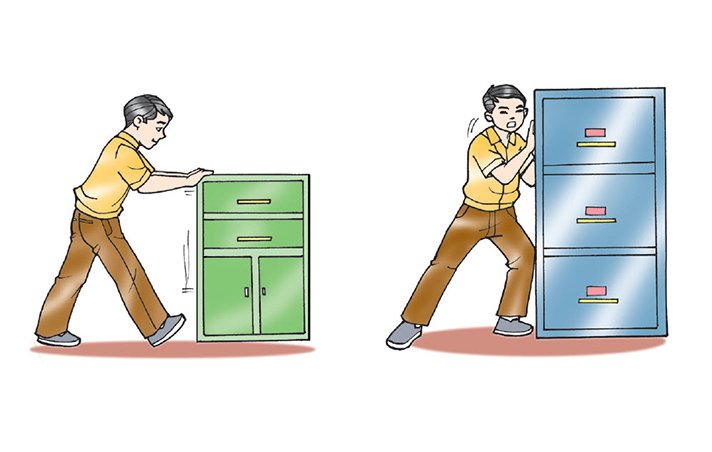Effects of Forces
Force and Movement
Force can also speed up or slow down the movement of an object. Increasing the amount of force exerted on a moving object will make it move faster. On the other hand, decreasing the amount of the exerted force will make the object move slower.
Look at the pictures. The boy can easily push the smaller and lighter cabinet. However, it is not as easy for him to push the bigger and heavier cabinet. Why is this so?
The amount of force required to move an object depends on the weight of the object. Heavier objects require greater force to move them. Lighter objects require less force. Since the bigger cabinet is heavier, the boy has to exert more force to move it.
Force and Direction
If you throw a paper airplane up in the air on a windy day, what do you think will happen? Most likely, the paper airplane will first move in one direction. However, because of the wind, it will change its direction many times before falling to the ground. This shows that wind can indeed change the direction of a moving object.
Force and Action and Reaction
In your daily activities, you experience a corresponding opposite and equal reaction to every action you do.
Look at the image of the two children riding on a seesaw. As the child at one end pushes down (action), the child at the other end goes up (reaction). As the child who drops to the ground pushes up (action), the child at the other end goes down (reaction).




